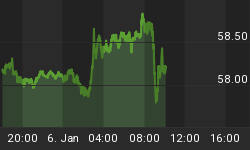The Federal Reserve will meet today faced with an important decision that some say is the most pivotal of the year. The Federal Open Market Committee is going to have to decide whether to abandon its belief that the economy is on a path to a slow, uncertain recovery or begin to consider new ways to keep the recovery from losing steam.
The recent series of weak economic reports including last Friday's disappointing jobs data has caused the Fed policymakers to abandon their crusade against inflation, and shift their focus on the strong possibility of deflation.
At this time the Fed is walking a thin line. It has to be cautious about what signal it sends to investors today. With today's decision, it does not want to fuel pessimism. On the other hand, a deflationary spiral has the potential of being devastating to the economy.
The Fed cannot afford to be late in responding to the threat of deflation because unlike inflation, it is too hard of a problem to fix. In the past, the Fed has demonstrated that it has the tools to fight inflation, but a deflationary scenario is another story.
Traders should be prepared for just about anything from the Fed today. It may decide to pass on any concrete plans to stimulate the economy or it may renew its quantitative easing program. Experts expect, at a minimum, the Fed will acknowledge the slowdown in the recovery and discuss steps to revive the economy through asset buyback programs similar to what they just let expire in March.
Another issue facing the Fed today is just how seriously its members are taking the threat of deflation. Most experts agree that Fed Chairman Bernanke has enough votes to alter previous policy statements since based on previous meetings; there is only one true hawk on the FOMC. However, there are only two members who have previously voiced their opinions on the threat of deflation.
Based on this assessment, the Fed is likely to revert to using a tool that it is familiar with - quantitative easing - rather then introducing fresh, untested weapons. This means that if it decides on anything at this meeting it will be another round of purchasing financial assets to hold down long-term interest rates and increase the supply of money.
Most analysts agree the Fed is likely to renew its QE policy, but have left open the possibility it will discuss lowering the interest it pays on reserves that banks keep at the Fed in excess of what they are required to, and altering the "extended period" language it has been using to describe how long short-term interest rates will remain at "exceptionally low" levels.
As mentioned earlier, however, the key will be how the Fed presents its plan to the investment world. The Fed has to act with clarity and conviction and not trigger thoughts of an overreaction. If investors interpret the FOMC decision the wrong way, a wave of pessimism could hit the marketplace, driving equity markets sharply lower and the Dollar and Treasury instruments higher.
This morning, investors seem to be leaning to the pessimistic side of the equation. Risky assets are taking a hit including currencies, equities, gold and crude oil, as traders shed positions ahead of this afternoon's FOMC decision.
A flight to safety rally is taking place in the Forex markets but this isn't the only reason for the strength in the Dollar.
A softer U.K. housing report is overshadowing this afternoon's U.S. Federal Open Market Committee announcement as falling house prices increased jitters in an already fragile economy.
Early in the trading session, a report from the Royal Institution of Chartered Surveyors said July house prices turned negative for the first time since July 2009. This report resonates other reports that showed a rising supply of houses for sale and decreased buyer interest. The return of a buyers market indicates the strong possibility of a softer housing market through at least the end of the year, leading to speculation of a double-dip recession.
Technically, after failing to follow-through to the upside following the penetration of a major Fibonacci retracement level at 1.5967 in two out of the last three trading session, the British Pound took out a main swing bottom at 1.5819. This move turned the main trend down on the daily chart. The chart pattern suggests that 1.5633 is the next likely downside target, followed by an uptrending Gann angle at 1.5400.
Concern about a slow down in the global recovery is also pressuring the Euro. Before the New York session opening, the Euro is trading on its low, threatening to turn the main trend to down on the daily chart on a move through the last swing bottom at 1.3119.
Based on the range of 1.1876 to 1.3334, the chart indicates that this current break could turn into something substantial if investors decide to begin shedding risky assets. If this current break turns into a hard correction, the daily chart indicates that 1.2605 would be the minimum downside target. This price represents a 50% correction of the June to August rally.
















